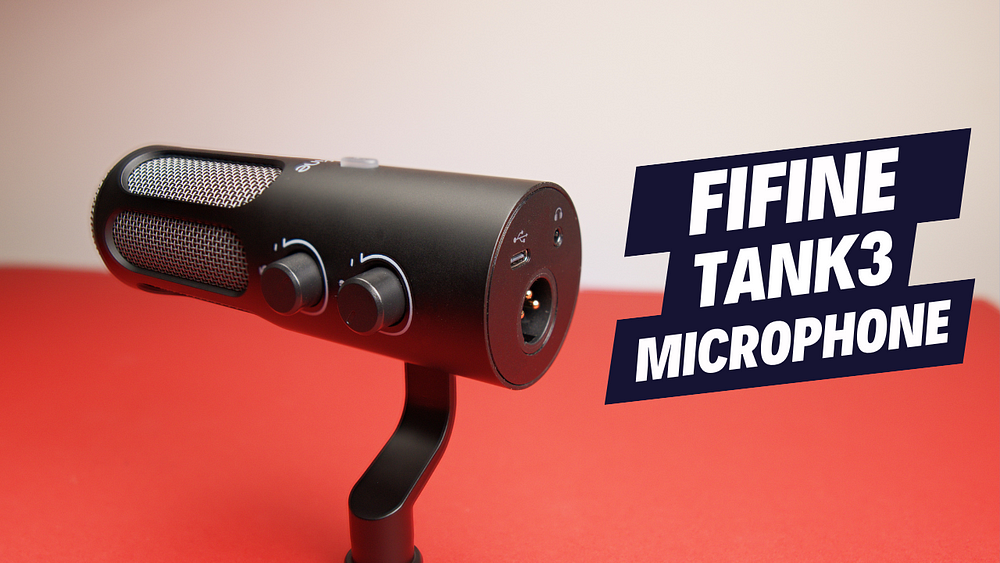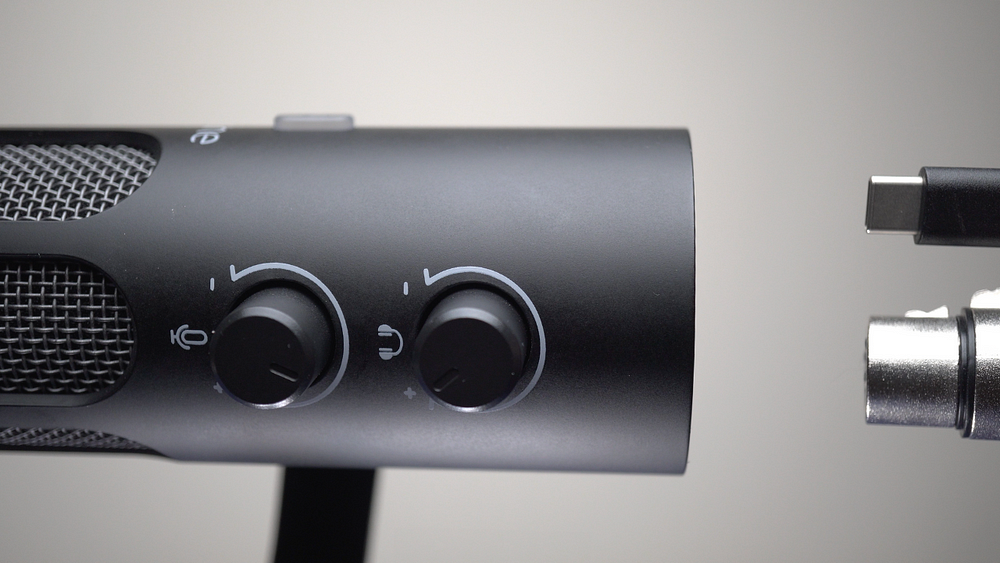I’ve been using the Tank3 microphone from Fifine. This dual XLR and USB-C mic has been generating a lot of buzz lately, especially for its price point, so I wanted to put it through its paces and see if it lives up to the hype.

First impressions? The Tank 3 has a pretty sleek design. It’s all in one black metal body feels really sturdy in your hands. But while it’s definitely heavier than some other budget mics, this is a good sign in terms of build quality.
On the front, the grey mesh adds to the tank’s look allowing easy transmission of your audio. The bits inside that you don’t see, there’s a built-in filter, which is awesome for reducing those plosive sounds, like p’s and b’s and a dynamic cardioid capsule, which primarily focuses on the sound coming directly in front of the mic, which is great for reducing background noise. There’s also separate knobs for gain control and headphone volume, and a handy mute button with a nice LED indicator, showing red when the mic is muted and green when it is active.
What I do like about this design, and it’s probably only a small thing, is that all of the labels and the positioning of them are geared for the microphone to be in this position, directly in front of the user.
Where the Tank 3 truly shines with its versatility, is what is located at the back. Here we have both an XLR and a USB-C input, which is going to let you connect the tank3 it directly to your computer or your PS4 or PS5, if you’re using the USB-C input with the 2.5m USB cable, that’s also included in the box (with the user manual) or to an audio interface using an XLR cable, which is not included in the box.

If you want to know my current setup for recording, I’m using the Tank3 plugged into my MacBook Air via the USB-C cable recording in Audacity.
There’s also a 3.5mm headphone jack for live monitoring, which is great for streamers and podcasters who want to hear themselves in real-time.
Anyone planning on getting this and using it with the XLR connection, the live monitoring and the mute button only work when the microphone is directly using the USB connection.
I mentioned before that the microphone doesn’t come with an XLR cable, so if you want to use an audio interface or a mixer, like the SC3 from Fifine, with this microphone, you’ll have to purchase one separately.
The other accessory missing, is a stand, the Tank3 has threads for both 3/8″ and 5/8″ microphone stand attachments, so this wider compatibility will allows you to use it with a wider variety of existing stands, desktop stands, or even boom arms you might already own and prefer.
I’m using the Tank3 on a boom arm (that I already had), because it’s the longest reaching arm that I’ve got and it doesn’t look as generic as those other boom arms that I’ve collected over the years that have been bundled in with other microphones.
(If you want to hear what this microphone sounds like with examples, check out the YouTube video).
The Fifine Tank 3 is a fantastic option for anyone on a budget who wants a professional-sounding microphone for their content creation.
Whether you’re a streamer just starting out, a podcaster looking to upgrade, or a gamer who wants crystal-clear communication with your teammates, this mic delivers. If you’re watching this looking for a significant upgrade over your headset mic without breaking the bank, then the Tank 3 is a great choice.
One of the biggest advantages of the Tank 3 is its dual connectivity and that versatility. The XLR connection allows you to connect it to an audio interface or mixer for even more control and potentially better sound quality, with cleaner audio.
This is ideal for professional setups or those who want more customisation. The USB-C connection, which it’s currently plugged in here, provides a plug-and-play option, perfect for beginners or those who want a simpler setup. It connects directly to your computer or Playstation console, with no additional hardware needed.
However, you might experience slightly more background noise with USB compared to XLR.
Now, the big question: How does it compare to other microphones, especially more expensive ones?
Sure, some high-end microphones might offer even better audio performance, and in those cases, the Tank 3 obviously won’t sound exactly like a high-end studio mic, with that exceptional sound quality, that often comes with a hefty price tag.
But for the price, it offers incredible value.
The Tank 3 bridges that gap between affordability and professional sound, making it a fantastic option for budget-conscious creators. Compared to those other microphones in this price range, the Tank 3 offers exceptional value. It boasts a more robust build quality, superior sound quality, and the incredible versatility of both XLR and USB-C connectivity.
The USB-C option gives you that starting point and the XLR option gives you room to grow and expand with your setup without having to purchase an expensive microphone while maintaining that overall really good sound quality.
So, what’s the verdict on the Fifine Tank 3? I’m thoroughly impressed! It’s a fantastic microphone that delivers professional-sounding audio at a price point that won’t break the bank.
The build quality is excellent, the sound is crisp and clear, and the dual XLR and USB-C connectivity makes it incredibly versatile.
If you’re looking for a microphone that can grow with you on your creative journey, punches above it’s weight and you’re on a budget, then the Fifine Tank 3, is a great option and could be a serious contender for your next audio upgrade.
If you want to get your hands on this microphone, use this code on Amazon to get 15% off, following the link in the description below.
FIFINE: https://fifinemicrophone.com/
US Amazon: https://amzn.to/4buMrjQ (15% off discount code: 15FIFINETANK)
UK Amazon: https://amzn.to/3xD4A13
If you would like to see the video version of this article with audio examples of the Fifine Tank 3 Microphone, check out the YouTube link below: